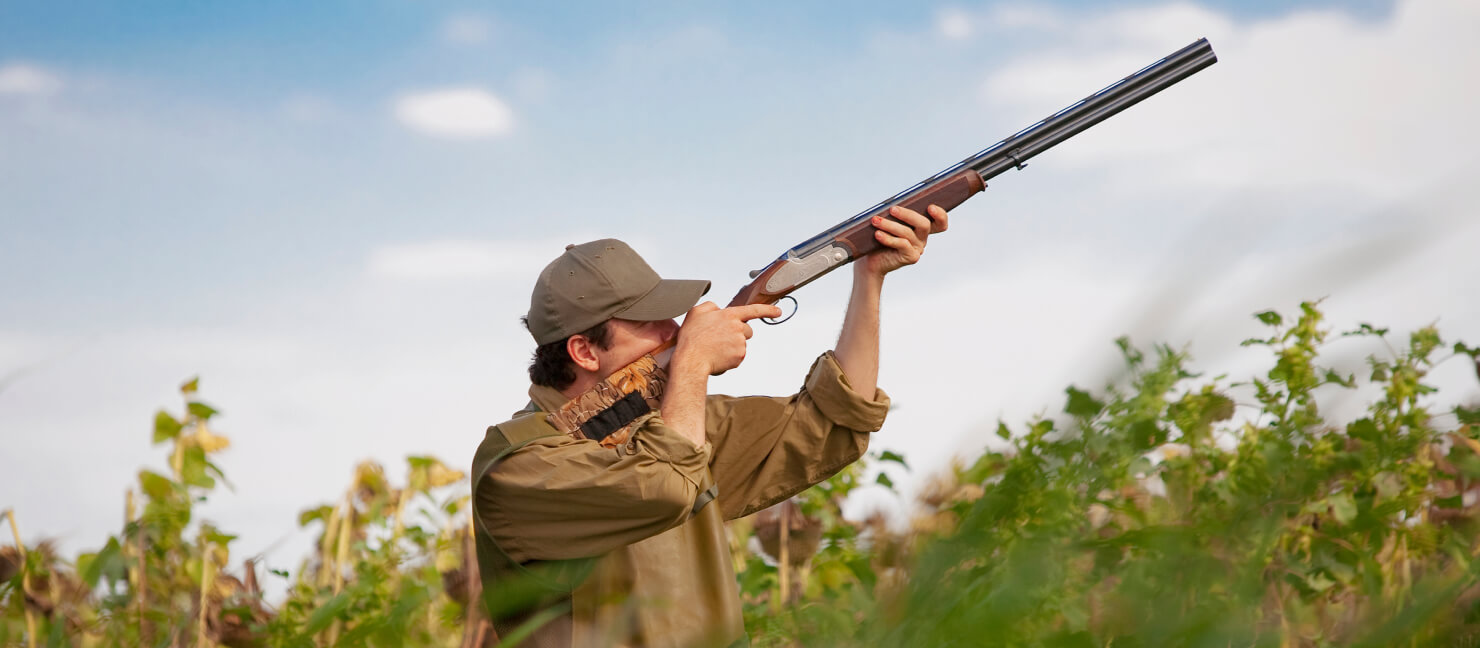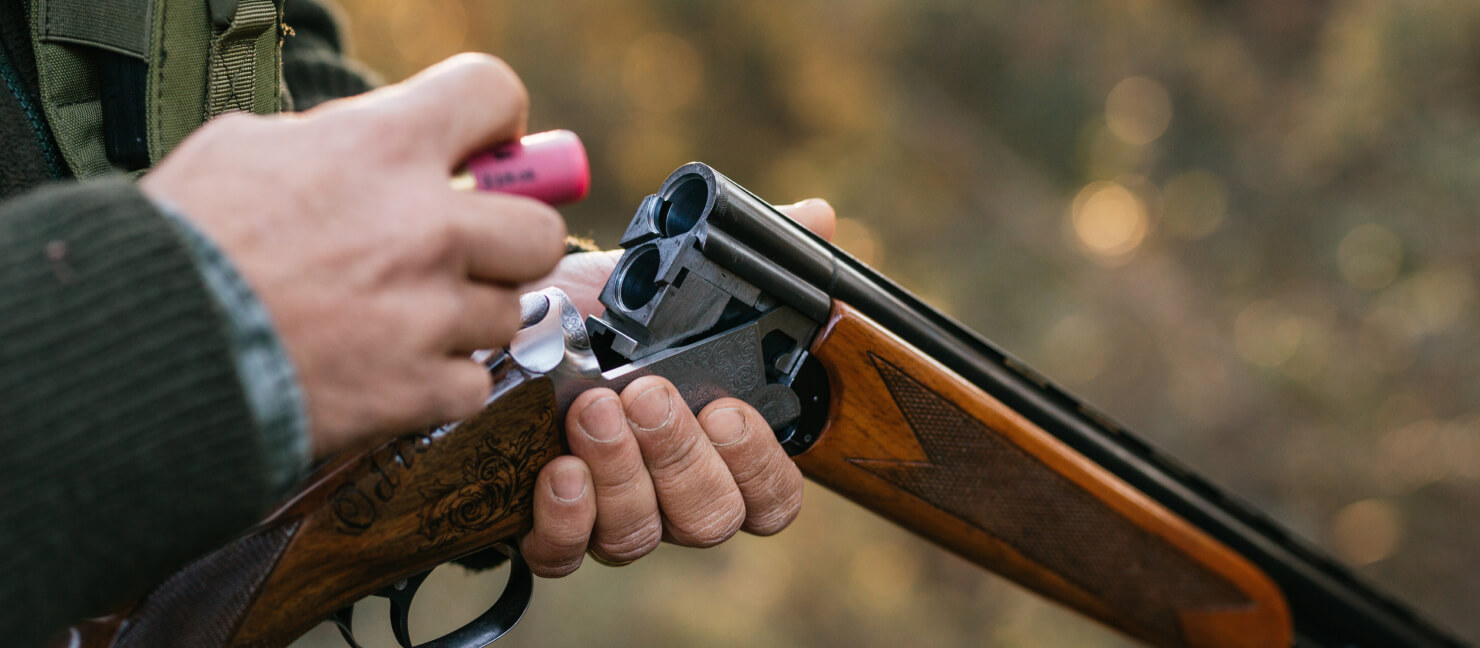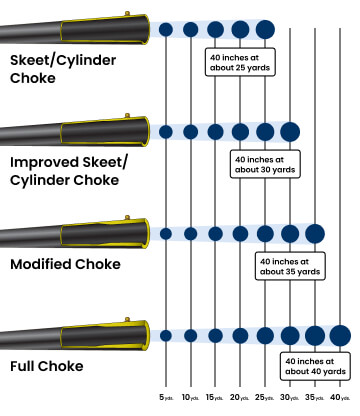Discover What the Best Chokes for Dove Hunting Are + More

Before you shoot your shotgun at those birds flying overhead, you’ll need the right choke for dove hunting! Using a shotgun choke can manipulate your bullet spread and increase your chances of nailing your target.
The right choke makes all the difference. Dove hunters need a flexible shooting strategy and shotgun setup throughout the season. In this guide, you’ll learn all about the best types of dove hunting chokes, early and late seasons shooting strategies, and more!
Key Takeaways
- Discover the best choke for dove hunting, including opening day, early season, late in the season, and the best all around.
- Unpack how to choose a choke for dove hunting and what type of bullet patterns each produces.
- Uncover the things to know when using a dove hunting choke so you can excel on the field.
- Learn what shot size to use for dove hunting and which size bullet is suitable for specific ranges.
- Find out which shotgun to choose for dove hunting so you’re always prepared!
Best Choke for Dove Hunting
Doves exhibit varying behaviors throughout the dove hunting season — requiring hunters to use specific chokes for each period. Chokes modify the ammunition pattern so you can achieve either a tighter or wider spread.
Whether you head out on opening day or in the later days of the dove hunting season, we can help you choose the most optimal shotgun choke and understand its performance characteristics:
| Shotgun Choke for Dove Hunting Guide | ||||
|---|---|---|---|---|
| Season | Choke Type | Shot Spread | Range | Shot Size |
| Opening Day | Skeet Choke | Wide Pattern | 5-20 yards with lead and 10-30 yards with steel | 7 ½ - 9 |
| Early Season | Improved cylinder or skeet choke | Wide pattern | 10-25 yards for lead and 15-30 yards for steel (improved cylinder) | 7 ½ - 8 |
| Late Season | Modified or improved cylinder | Slightly constricted pattern | 20-35 yards with lead and 25-45 yards with steel (modified) | 6 ½ - 8 |
Best Dove Choke for Opening Day
On the opening day of the dove hunting season, consider a skeet choke:
-
The wide pattern provided by a skeet choke is particularly beneficial because doves tend to be less cautious and more abundant.
-
This choke excels at targeting doves near waterholes (where the wider spread increases the chances of hitting these fast-flying birds).
-
Its ability to open wide and fast makes the skeet choke extremely effective, ensuring a higher probability of successful shots on opening day.
Best Dove Choke for Early Season
The best shotgun choke for dove hunting in the early season is the improved cylinder or skeet choke:
-
These chokes provide a wide shot spread, which is ideal for targeting the smaller, younger doves commonly encountered at the beginning of the season.
-
Doves are less wary during this time so you can confidently shoot from close range with these chokes.
-
If you prefer the wider shot pattern, the improved cylinder or skeet will be the best dove hunting choke for you. Use it throughout the rest of the season.

Best Late Season/Pressured Dove Choke
As dove hunting season progresses and more and more doves are killed, you’ll need to use a longer-range choke to increase your chances of success. The modified or improved cylinder chokes are best for late season dove hunting.
-
The modified choke offers a balanced option, allowing you to shoot up to 45 yards away while maintaining a denser shot pattern for improved accuracy and pellet placement.
-
Pressured doves are doves that are more aware of your decoys and weary of shotgun blasts (particularly around their food or drink sources) in the late season.
-
Pressured doves are more difficult to target. They’ve become weary of shotgun blasts — particularly around their food or drink sources.
Best Dove Hunting Choke All-Round
When it comes to an all-around choke that can handle various hunting situations, the modified choke stands out as a reliable choice:
-
The modified choke pairs well with shot size 8, providing a good balance of pellet count and size for effective dove hunting.
-
When using lighter loads with the modified choke, the pellets carry longer distances, increasing your chances of successfully bagging more doves.
Dove Hunting Shotgun Choke Chart
Each shotgun choke type has different patterns at greater and lesser distances. Below is a shotgun choke chart for dove hunting to help you visualize the best ranges for each choke:

Choosing a Choke for Dove Hunting
Before you screw any choke into the muzzle of your shotgun, you’ll want to know the level of constriction each applies to the ammo. Chokes vary in the level of constriction, which affects the bullet’s spread pattern.
Dove Hunting Skeet Choke
Skeet chokes are favored by skeet shooters who engage in the sport of shooting clay pigeons launched into the air.
-
Designed to deliver a wide shot pattern similar to cylinder chokes, they excel in close-range hunting.
-
Skeet chokes are particularly effective during the early season when doves are less wary. They are an excellent choice for close-range shots of up to 25 yards or less.
-
With a constriction of approximately .005 inches, skeet chokes provide the desired spread for successful pursuits.
Dove Hunting Improved Cylinder
The improved cylinder choke offers a slight constriction to the ammunition while still maintaining a relatively wide shot pattern.
-
It is particularly useful when doves approach decoys. The wider spread increases the likelihood of hitting these birds.
-
For the best performance, we recommend the improved cylinder choke for shots within the range of 25 to 30 yards.
-
With a constriction of approximately .01 inches, it strikes a balance between a more open pattern and a moderate level of pellet density. It’s certainly a versatile choice.
Modified Choke for Dove Hunting
Modified chokes are a popular choice for dove hunting: especially when targeting birds at longer distances.
-
With a moderate constriction of approximately .020 inches, they offer a balance between shot pattern density and effective range.
-
Ideal for shots within the range of 30 to 35 yards.
-
The modified chokes provide increased pellet density compared to wider chokes like skeet, making them more suitable for longer-range shots.
Full Choke for Dove Hunting
Full chokes are not recommended for the start of the dove hunting season. They can cause excessive damage to doves at close range.
-
Their tight constriction makes it challenging to hit doves from far distances, making a full choke unnecessary for typical dove-hunting scenarios.
-
If you find yourself needing extended-range capabilities later in the season, a full choke can be utilized at distances of around 45 yards.
-
With a constriction of approximately .030 inches, full chokes provide the tightest shot pattern, offering precision when targeting distant doves.
Expert Tip:
Practice shooting your shotgun with different types of chokes at the gun range before heading out. You’ll be able to see the shoot pattern at different distances and choose the best dove hunting choke accordingly.
Thing to Know When Using a Choke for Dove Hunting
-
Aim for Wide Patterns: When targeting doves, you’ll want to create a wider and denser shot pattern. This will give you a higher probability of hitting the dove.
-
Change Chokes Seasonally: As the season progresses, consider upgrading one choke tightness level: transitioning from a modified choke to an improved cylinder. This adjustment provides a slightly tighter pattern.
-
Use Screw-In Chokes: Screw-in chokes allow you to easily swap between chokes while on the field and make quick adjustments based on specific hunting conditions. Most newer shotguns have this functionality.
What Shot Size to Use for Dove Hunting
The majority of hunters opt for shot sizes 7 ½ or 8. These sizes strike a balance between pellet count and effective range and also help to preserve meat.
Your choice of shot material also influences the pattern! Lead shots tend to produce a looser pattern, while steel shots result in a tighter pattern. Each option offers different benefits depending on the hunting situation.
| Dove Hunting Shot Sizes Compared | ||||
|---|---|---|---|---|
| Shot Size | Diameter (inches) | Typical Distance | Best Used For | |
| 5 | 0.120 | 40-50 yards | Suitable for longer-range or larger game birds — not typically used for dove hunting. | |
| 6 | 0.110 | 25-45 yards | Useful for slightly smaller game or a bit closer than size 5 (still less common for doves). | |
| 7 | 0.100 | 35-40 yards | Great for slightly longer ranges than 7 ½ due to a larger pellet size while still maintaining a reasonable pellet count for a sufficient spread. | |
| 7 ½ | 0.095 | 25-35 yards | All-around choice for dove hunting, suitable for a variety of ranges and provides a good balance between pellet count and pellet energy. | |
| 8 | 0.090 | 20-30 yards | A good choice for the early season when doves are closer, providing a high pellet count but less energy per pellet. | |
| 8 ½ | 0.085 | 15-25 yards | Ideal for shorter ranges or smaller game birds due to the increased pellet count but with a slight reduction in energy per pellet. | |
| 9 | 0.080 | 10-20 yards | Can be used for close-range or early-season dove hunting, offering the highest pellet count but also the lowest energy per pellet. | |
Which Shotgun to Choose for Dove Hunting
Choose a shotgun that is lightweight and user-friendly. Hunters often opt for 20-, 16-, or 12-gauge shotguns. However, if you intend to hunt the best variety of game (including doves, turkey, and deer) a 12-gauge shotgun provides greater versatility.
When it comes to the type of shotgun, popular choices for dove hunting include pump-action and semi-automatic styles. Side-by-side or over-and-under styles are also known for their reliability and ease of use.
Have Fun Out There!
Hoping to bag your first dove of the season? Shotgun chokes enable you to constrict your shot pattern! While you wait for the dove to land at their favorite watering hole, you can hit your target with ease. At Academy, we carry the best chokes for dove hunting so you can bring home dinner for later and bond with your buddies!


